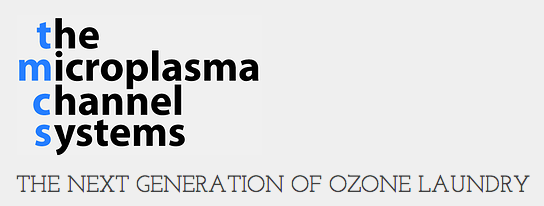
TMCS, Inc. is a small local company that leases ozone laundering systems to long-term healthcare facilities, hotels and any other type of facility that does large amounts of commercial laundry. So what’s ozone laundering? It’s putting ozone (O3) into a washing machine to help with a wash load—ozone cleans naturally, disinfects better than bleach, and dissipates quickly after use. Ozone laundry has been around for years and has been used effectively in large institutions like hospitals and prisons, but is not as widespread as it perhaps will be one day. Max Redmond, CEO of TMCS, Inc., first began using ozone laundry about seven years ago in a long-term healthcare facility he was the Executive Director at the time, discovered he saved a lot of money with it, and later formed TMCS to market it to others. I spoke with Redmond recently about ozone laundry in general and where his company is headed.
Ozone Laundry
Ozone laundering is more environmentally friendly than conventional laundering and is also cheaper—because it’s more environmentally friendly. Ozone laundering does not have as many rinse steps in the laundry cycle as conventional laundry, and therefore uses less water. Also, less hot water is used since ozone works best in room temperature water. Fewer chemicals are required to clean laundry as well, and ozone is a powerful natural disinfectant.
TMCS, Inc.
Redmond told me how his own ozone laundering company got started from what was basically an experiment at a few long term healthcare facilities to the small but expanding business it is today:
We don’t know where the business is going, but I’ve spent seven years on it. When we first started, we put units in four healthcare facilities and spent a year just letting them use it and adjusting various aspects of the equipment installation and wash programs. Then after a year we said, “What do you think?” And all four said that they saved money with it.”
Originally I got into it to see if I could save Swann Special Care Center [in Champaign] and some other facilities money, and we did. And so then, after that, I said, “Let’s see if we can market it.” And so now we’ve been doing that for between three and four years. It’s interesting.
We’ve been doing this for seven years, and pretty much everything is different with us—not necessarily in the market. We started with a really small unit that would only process two gallons of water a minute and only about 1.8 parts per million in the water were ozone. Now, the unit we’re using can process any amount of water we want to—we adjust the size of the venturi. The cold water supply goes through a venturi where ozone is sucked into the water which then goes into the washer. We can process up to thirty gallons of water a minute. We have to know how much water we have to process to know how many units we’re going to put up or how big a unit we have to have.
An unusual business model
TMCS, Inc. has an unusual business model. They only charge their clients a percentage of the money they save. Redmond explained:
We only lease units; we never sell them. Mainly because if we’re going to have to take care of them, that’s how we can take care of them best. We maintain the equipment through the life of the contract. We give a 90 day trial, and during that trial we calculate what their savings will be. Whatever they save, we ask for 30% of those savings. The savings are verified and we present the savings report to them. Say, for example they are saving $5000 a year in chemicals, $4000 a year in hot water and $5000 in drying time. We add that up and we charge 30% of the total. So they don’t have to invest anything; there’s no up-front expense. They pay us out of their savings. So they can’t lose.
New Developments
Recently, Redmond found out that scientists across town at the University of Illinois were working on ways to generate ozone more efficiently by using microplasma technology. Although the scientists weren’t originally planning on using their new technology to generate ozone for laundry units, they eventually teamed up with TMCS, Inc. to do just that. Redmond explained:
They’ve been doing research on ozone for years, and they have patents. But their goal, I believe was to develop something for municipal water supply. But then some people in the community put us in touch with each other, and we told them what we were doing and they told us what they were doing. They had never even discussed laundry. They were thinking about using their technology for wastewater treatment—that’s mostly what ozone is used for now. Also, the military has used it to disinfect drinking water in the field.
As of right now, Redmond said, a prototype ozone generator for laundry is being developed at the U of I: “For laundry, as far as I know, this will be the first microplasma channel unit. The University’s been working on that.”
In Conclusion
It appears to me that TMCS, Inc. is marketing a way of doing laundering that’s environmentally sound, financially profitable and going through a period of technological development.
Redmond said that he’s already talking to different hospital supply companies about putting in ozone laundering systems at various facilities with the potential to take things national. He said:
We’ve worked with Stratum med, who works with Carle. Stratum Med is in about seven states, and they work with doctors and also supply hospitals. We’re doing a lot of talking right now. There’s no reason why it wouldn’t work.
For more information on ozone laundry:
The Ozone Laundry Handbook—A Comprehensive Guide for the Proper Application of Ozone in the Commercial Laundry Industry.








